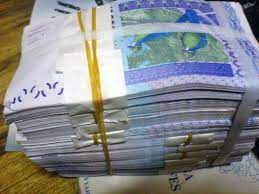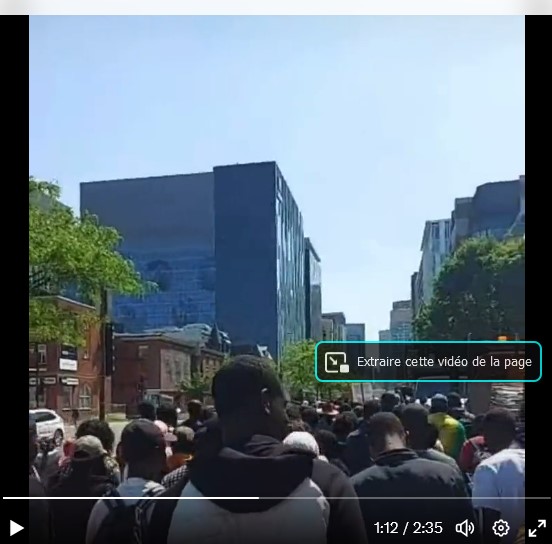Repairing coral reefs after damage from climate change
Écrit par SENETOILE NEWS Repairing coral reefs after damage from climate change
Repairing coral reefs after damage from climate change
Repairing coral reefs after damage from climate change
Repairing coral reefs after damage from climate change
Researchers at the Heron Island Research Station in Australia are using a Nortek velocimeter to determine how much hydrodynamic energy it takes to move around “coral rubble,” the skeletons of corals broken apart by bleaching or storm events in the ocean. Fortunately, researchers have found that stabilizing rubble can be an effective technique for coral reef recovery.
Coral bleaching and storm events can create vast areas of coral rubble on the Great Barrier Reef. If rubble remains in one place for a long time, new, healthy corals can effectively recruit onto it and the reef can recover naturally; but if the rubble is moving around a lot due to waves and currents, new corals living on it can die, hindering recovery. Rubble stabilization interventions can be deployed in areas where the rubble is prone to frequent movement, but we don’t yet know where those areas are.
Investigating energy thresholds for coral rubble movement
“With climate change, we’re going to see more frequent and intense storms and cyclones, as well as coral bleaching events,” says Dr. Tania Kenyon, Postdoctoral Researcher in the Marine Spatial Ecology Lab at the University of Queensland in Australia.
Using a Vector velocimeter designed by Nortek to measure water flow, Dr. Kenyon and other researchers correlated the movement of rubble pieces with flow disturbances to determine how much hydrodynamic energy it takes to move coral rubble.
“What we’re doing with the Vector is looking at rubble mobilization thresholds. We’re using it to monitor the hydrodynamic environment while also looking at the movement of rubble pieces,” Dr. Kenyon explains.
“From previous work I’ve done in the Maldives, we’ve found movement thresholds of about 0.3 to 0.4 m/s. We’re furthering that work now on the southern Great Barrier Reef.”
Working to preserve coral reefs during climate change
“Reefs are very important: millions of people around the world rely on them, they’re important for coastal protection and they’re one of the most biodiverse habitats in the world,” says Dr. Kenyon.
Coral reefs support more species per unit area than any other marine environment and are key to many human development goals, such as supporting sustainable fisheries, discovering new species that can be used in new medicines and bringing in tourism money to support local economies.
Armed with information on what characterizes sites that could benefit from coral rubble stabilization techniques, the team will develop maps of the Great Barrier Reef that show priority areas for such interventions, i.e. areas in the ocean where rubble is moving too frequently for natural coral recovery to occur.
Research in Australia into coral rubble stabilization
Dr. Kenyon is part of the Rubble Stabilisation Subprogram team, comprising scientists from the University of Queensland and Queensland University of Technology, including Dr. Daniel Harris, who is also working on rubble movement and stabilization.
The subprogram is part of the Reef Restoration and Adaptation Program (RRAP), which has brought together Australia’s leading coral reef experts and is funded by the partnership between the Australian Government’s Reef Trust and the Great Barrier Reef Foundation.
This work will contribute to broader-scale research that identifies areas appropriate for rubble stabilization intervention efforts.
Rubble stabilization techniques include structures that are attached to the substrate to pin rubble down or corral it, including biodegradable meshes, rock piles, rebar grids and structures such as MARS Reef Stars. If rubble is stable for long enough, it can then be naturally bound together by sponges, coralline algae and other marine organisms into a stable surface, like bricks and mortar.
Identifying the best coral restoration techniques for reefs worldwide
While Dr. Kenyon is currently working on the Great Barrier Reef, she is hopeful that the outcomes of this and the other research being done can be used to identify the best coral restoration techniques for reefs worldwide and help reefs navigate the challenges of climate change.
“There is hope for our reefs, if we give them the best fighting chance,” says Dr. Kenyon. “If we bolster their resilience and foster adaptation through various interventions, while also moving to clean energy, we can hopefully hold onto these crucially important ecosystems.”

Dr. Kenyon and Nortek representative Harry Hughes look over deployment settings for the Vectors back at the lab in the research station.

Dr. Kenyon, Karen Eigeland and team are researching natural rubble binding rates over time on rubble that has been experimentally stabilized.

The Eco ADCP and the Vector were both used to characterize the study site’s hydrodynamic environment.

Healthy coral reefs like this site near the Heron Island station are home to thousands of species of fish and other animals.

The rubble stabilization field team uses marked pieces of coral rubble to determine how far from their starting point the rubble moves. The data from the Vector will be used to associate that movement with how much hydrodynamic energy it took to cause it.
Contact for further information and interviews:
Torbjørn Goa, Communication Manager, Nortek AS
Cette adresse e-mail est protégée contre les robots spammeurs. Vous devez activer le JavaScript pour la visualiser.
www.nortekgroup.com
Nortek’s advanced Acoustic Doppler Current Profilers (ADCPs) and Doppler Velocity Logs (DVLs) use the Doppler effect to measure motion in the marine environment. ADCPs are used to measure oceanographic processes as seen in currents and waves, while DVLs help subsea vehicles to navigate underwater.
Scientists and engineers across the world trust Nortek for high performance through quality, innovation and support.
Nortek’s headquarters are just outside Oslo, Norway, where R&D, product assembly and other main functions are situated. In addition, we have subsidiaries in the US, the UK, China, Japan, Australia, Brazil, France and the Netherlands.
-
 0
0
-
 0
0
-
 0
0
-
 0
0
-
 0
0
-
 0
0
Dernier de SENETOILE NEWS
- La Chief Executive Officer (CEO) de la Fondation Merck, La Sénatrice, Dr. Rasha Kelej, célèbre la « Journée Mondiale du Diabète » en offrant sur 2080 bourses, 830 bourses pour le Diabète et l'Hypertension dans 52 pays
- Daimler Truck Middle East Africa annonce l'élargissement de ses responsabilités régionales
- Des chefs d’État, des ministres de l’Énergie, des investisseurs et des fournisseurs indépendants d’énergie se réunissent au Togo à l’occasion du West Africa Energy Cooperation Summit
- Chambre Africaine de l'Energie (AEC) félicite Trident Energy pour le succès de la production du puits intercalaire C-45, un grand pas en avant pour le secteur pétrolier et gazier de la Guinée Equatoriale
- Le Maroc et l’Estonie s’engagent à renforcer leur coopération socio-économique
Laissez un commentaire
Assurez-vous d'entrer toutes les informations requises, indiquées par un astérisque (*). Le code HTML n'est pas autorisé.







